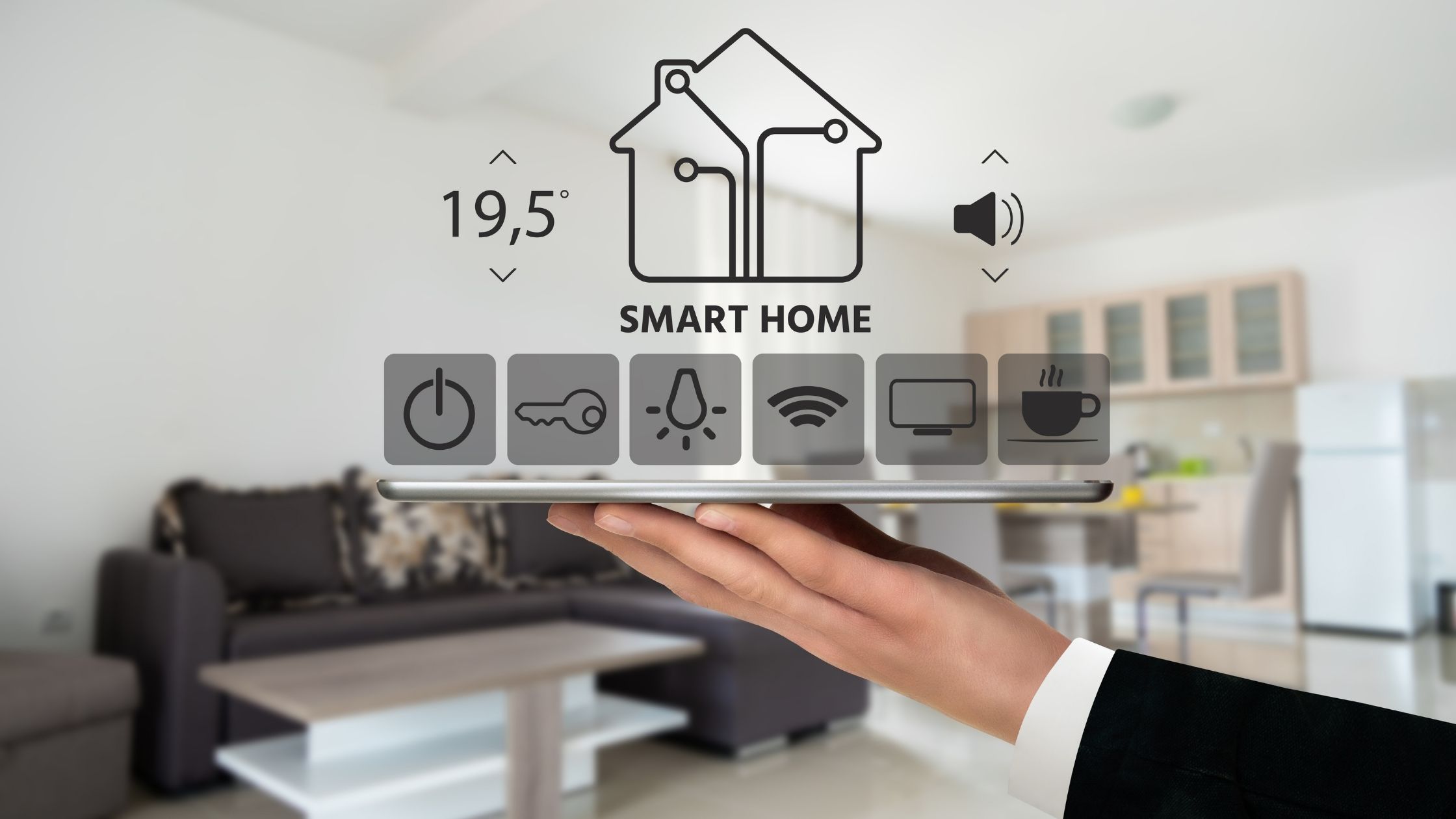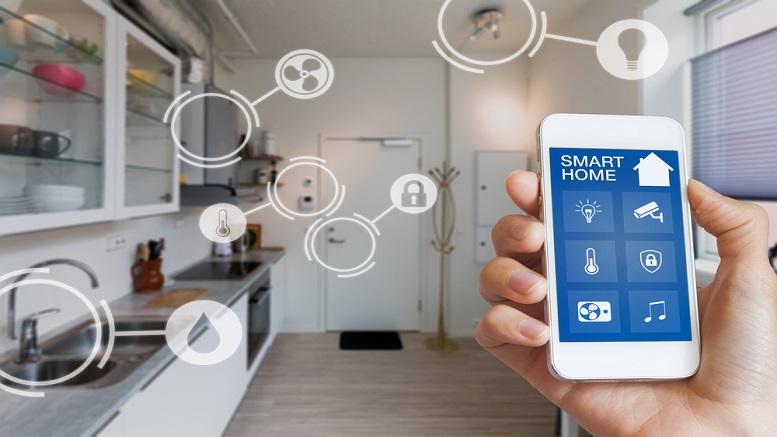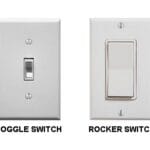To turn a house into a smart home, start with a strong Wi-Fi network and choose a smart assistant. Select compatible devices for seamless integration.
Embracing the smart home revolution is simpler than it seems, even for beginners. The journey to a smarter living space begins with foundational steps, focusing on connectivity and smart assistance. A robust Wi-Fi network is the backbone of any smart home, ensuring devices communicate effectively.
The choice of a smart assistant—be it Amazon Alexa, Google Assistant, or Apple’s Siri—sets the stage for a harmonious ecosystem. This decision guides the selection of compatible devices, from smart lights to thermostats, ensuring they work together seamlessly. This approach not only enhances convenience and efficiency but also tailors the living experience to personal preferences and lifestyle. By keeping these initial steps in mind, anyone can embark on creating a smart home that offers both comfort and cutting-edge technology.
Intro To Smart Home Basics
Imagine controlling your house with just your voice. Lights turn on as you walk in. Your favorite music starts to play. This is not a scene from a sci-fi movie. It’s a smart home, and you can build one too. Let’s explore the basics of turning your house into a smart home, perfect for beginners.
What Is A Smart Home?
A smart home has devices that connect to the internet. You can control these devices with a phone, tablet, or voice. Think of lights, thermostats, and locks working together. They make life easier and your home smarter.
- Lights that dim or change color
- Thermostats that adjust to your comfort
- Locks you can open from anywhere
- Cameras that show you who’s at the door
- Speakers that play music when you ask
Benefits Of Automating Your Abode
Smart homes offer benefits that go beyond cool tech. They can save you time and money. They can also keep you safe. Here are some of the top benefits:
| Benefit | Description |
|---|---|
| Convenience | Control your home with a tap or a word. |
| Savings | Smart devices can cut down on energy use. |
| Security | Keep an eye on your home, even when away. |
| Comfort | Your home adjusts to your needs automatically. |
| Peace of Mind | Know your home is safe, day and night. |
First Steps To Smart Home Conversion
Embarking on a smart home conversion is thrilling. It merges modern tech with daily living. Let’s explore the first steps to make your house smart.
Assessing Your Needs
Before diving into gadgets, consider what you want. A smart home should solve problems, not create new ones. List areas you wish to enhance. Think comfort, security, and convenience. Prioritize tasks you do daily.
- Security: Locks, alarms, and cameras.
- Comfort: Thermostats, lights, and blinds.
- Convenience: Voice assistants, smart plugs, and appliances.
Match tech solutions to your lifestyle. Parents may want baby monitors. Work-from-home professionals might need smart office gear.
Creating A Budget
Smart home tech varies in price. Set a clear budget. This avoids overspending and focuses choices.
| Item | Essential | Comfort | Luxury |
|---|---|---|---|
| Smart Locks | X | ||
| Smart Thermostats | X | ||
| Smart Speakers | X |
Start with essentials. Expand as you go. Track expenses with a simple spreadsheet or budget app. Look for deals and bundles to save money. Remember, quality trumps quantity in smart homes.
Choosing The Right Smart Home Ecosystem
Transforming a standard house into a smart home is thrilling. The first step is picking a smart home ecosystem. This choice shapes your tech journey. It’s like choosing a team for your home gadgets. Let’s explore how to make the right choice.
Popular Platforms
- Amazon Alexa: Great for voice control.
- Google Assistant: Ideal for Google product lovers.
- Apple HomeKit: Perfect for iPhone users.
Compatibility Considerations
Your smart devices must work together. Check if each gadget “talks” to your chosen platform. A good fit means easy control. Look for “Works with” labels on product boxes.
| Platform | Compatibility Check |
|---|---|
| Amazon Alexa | Look for “Alexa Compatible” tag. |
| Google Assistant | Search for “Google Assistant Ready”. |
| Apple HomeKit | Ensure “Works with HomeKit” is present. |

Credit: neeeco.com
Essential Smart Devices For Beginners
Turning your house into a smart home is exciting and easy! For beginners, some devices are essential. They make your home safe, comfortable, and smart. Let’s explore these devices.
Smart Lighting Solutions
Smart lighting makes your home bright and colorful. You can control lights with your phone or voice. Start with these:
- Smart bulbs: Change colors and set schedules.
- Smart switches: Use your old bulbs in smart ways.
Smart lighting saves energy and money. It’s cool and useful.
Smart Thermostats
Smart thermostats keep your home warm or cool. They learn your schedule. They save energy too. Look for these features:
- Easy control with your phone.
- Learning your routine to adjust the temperature.
Smart thermostats make your home comfy and save on bills.
Security And Surveillance
Keep your home safe with smart security. Start with these devices:
| Device | Use |
|---|---|
| Smart cameras | Watch your home from anywhere. |
| Smart locks | Lock and unlock doors with your phone. |
| Doorbell cameras | See and talk to visitors at your door. |
These devices make your home safe and smart.
Setting Up Your Smart Hub
Turning your house into a smart home starts with a smart hub. This device connects all your smart gadgets. It lets you control them from one place. A smart hub makes your life easier and your home smarter.
Installation Tips
Choosing the right spot for your smart hub is key. It should be central in your home. This helps it connect well with all devices. Make sure it’s near a power source too.
- Follow the manual. Each smart hub comes with a guide. Read it carefully.
- Update the software. Before adding devices, update your hub. This ensures it works well.
- Test the connection. Place a smart device near the hub. See if they connect.
Syncing Devices
After setting up your hub, it’s time to add your smart devices. This can be lights, locks, or thermostats.
- Open the smart hub’s app on your phone.
- Look for an option to add or discover new devices.
- Select the device you want to add.
- Follow on-screen instructions to finish setup.
Repeat these steps for each smart device. Soon, your home will be fully smart.
Wi-fi And Connectivity
Wi-Fi and Connectivity are the backbone of a smart home.
A strong network ensures devices communicate seamlessly.
Let’s dive into setting up a robust home network and tackling connectivity issues.
Improving Home Network
Boost your Wi-Fi to make your home smarter.
Start with a high-speed internet plan.
Position your router centrally for better coverage.
Upgrade to a mesh network for larger homes.
This ensures no dead zones.
Devices like smart thermostats and cameras need strong signals.
- Choose the right router: Dual-band routers are best.
- Update regularly: Firmware updates improve performance.
- Secure your network: Use strong passwords to prevent hacks.
Dealing With Connectivity Issues
Connectivity problems can disrupt a smart home.
First, check if all devices are online.
Restart your router to fix minor glitches.
If issues persist, check for interference.
Other electronics can cause disruptions.
Keep your smart devices away from microwaves and cordless phones.
- Reboot devices: This often resolves connectivity issues.
- Check for updates: Device software needs to be current.
- Contact support: Get help if problems do not resolve.
| Issue | Solution |
|---|---|
| Slow Internet | Upgrade plan or reset router |
| Dead Zones | Install Wi-Fi extenders |
| Device Not Connecting | Check Wi-Fi settings on the device |
Smart Home Automation
Smart Home Automation transforms your living space. It brings comfort, convenience, and control to your fingertips. Start with basic steps to make your home smart. Connect devices to a central system. Control them with a phone or voice. It’s easy and fun!
Creating Scenes And Routines
Automate daily tasks with scenes and routines. Set them up once. Your smart home does the rest. It’s like magic.
- Wake Up Scene: Lights slowly brighten. Music plays softly. Start your day right.
- Leaving Home: All lights off. Thermostat adjusts. Save energy easily.
- Movie Night: Dim lights. Close blinds. Create perfect movie ambiance.
Use an app to create these scenes. Choose devices. Set actions. Enjoy seamless living.
Voice Control Integration
Control your smart home with your voice. It’s simple and hands-free.
- Choose a Voice Assistant: Amazon Alexa, Google Assistant, or Apple Siri.
- Connect Smart Devices: Link lights, locks, thermostats, and more.
- Use Voice Commands: Say “turn on the kitchen lights” or “set thermostat to 70 degrees”.
Enjoy the ease of controlling your home. Speak your needs. Watch your home respond.
Maintaining Your Smart Home
Welcome to the heart of smart home mastery—maintenance. Once your house transforms into a smart home, regular upkeep is key. This ensures everything runs smoothly. Let’s dive into how to keep your smart home at its best.
Regular Updates
Smart devices require updates to function well. These updates can improve security, add features, and enhance performance. Follow these simple steps:
- Check device apps for update notifications
- Schedule updates during off-peak hours
- Enable auto-update features if available
Troubleshooting Common Problems
Encountering issues is normal. Quick fixes can resolve most problems. If your smart device isn’t working:
- Restart the device
- Check for updates
- Refer to the user manual
- Contact customer support if needed
Keep a log of issues and solutions. It helps identify patterns and prevent future problems.
Privacy And Security In Smart Homes
Embracing smart home technology brings comfort and convenience. Yet, privacy and security concerns arise. It’s crucial to protect your digital fortress. Let’s explore how to secure your smart home effectively.
Securing Your Network
Secure Wi-Fi networks lay the foundation for a safe smart home. Follow these steps:
- Change default router passwords.
- Use strong, unique passwords.
- Enable WPA3 encryption on routers.
- Update router firmware regularly.
- Disable remote management features.
- Set up a guest network for devices.
Consider a firewall to block unwanted traffic. A VPN adds an extra security layer.
Understanding Data Usage
Smart devices collect data to function. Know what data gets collected:
| Device Type | Data Collected |
|---|---|
| Smart Speakers | Voice Commands, Preferences |
| Security Cameras | Video Footage, Audio Clips |
| Smart Thermostats | Temperature Settings, Schedules |
Read privacy policies. Adjust device settings to minimize data sharing. Regularly review and delete stored data.

Credit: www.indiabullsrealestate.com
Future-proofing Your Smart Home
Turning your house into a smart home is exciting. Future-proofing it is crucial. It ensures your home stays up-to-date with the latest technology. Let’s explore how to keep your smart home current and flexible for what’s next.
Investing In Scalable Solutions
Choose devices that grow with your needs. Look for systems that support easy add-ons. This will save time and money.
- Smart hubs manage multiple devices.
- Wireless protocols like Zigbee and Z-Wave are key.
- Opt for modular systems.
Compatibility between devices is essential. It makes upgrades seamless.
Staying Informed On New Tech
Technology changes fast. Stay updated on latest trends.
- Follow tech blogs.
- Join online forums.
- Subscribe to newsletters.
Being informed helps make better choices for your smart home.

Credit: www.batteriesplus.com
Frequently Asked Questions
What Are Smart Home Basics For Beginners?
Smart homes utilize interconnected devices for automated control over various home systems, enhancing convenience and energy efficiency.
How Do Smart Homes Save Energy?
Smart homes save energy by using sensors and schedules to optimize heating, cooling, lighting, and appliance use for reduced power consumption.
Can Smart Home Technology Increase Security?
Yes, smart home technology enhances security through surveillance cameras, smart locks, and alarm systems that are remotely controllable.
What Is Needed To Start A Smart Home?
Starting a smart home requires a reliable internet connection, a central hub or smart speaker, and compatible smart devices like bulbs and thermostats.
Are Smart Homes Expensive To Set Up?
Setting up a smart home can be cost-effective with scalable options, allowing for gradual investment in compatible devices as desired.
Conclusion
Embracing smart technology transforms your living space into a haven of convenience and safety. Start small, prioritize needs, and gradually build your connected home. Remember, every smart device you add is a step towards a futuristic, efficient lifestyle. Take that first step and enjoy the journey to a smarter home.




